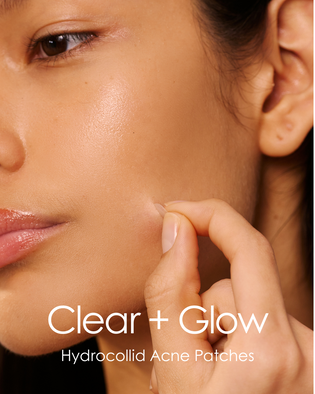
Understanding Wavelengths and Power Density of Red Light Therapy
IN THIS ARTICLE:
- 01 What is LED Light Therapy?
- 02 What Are Wavelengths in LED Light Therapy?
- 03 What Is Power Density and Its Importance in Treatments?
- 04 Wavelengths and Their Applications
When choosing an LED light therapy device, such as a mask, you've likely heard about finding the right color or wavelength for your skin. But here's the deal: there's one more essential thing to consider - the power density or strength of the device.
If you’re really serious about optimizing your LED light therapy treatment, it's essential to familiarize yourself with the concept of power density.
What is LED Light Therapy?
LED light therapy is a non-invasive skin treatment that makes use of the power of light energy to address a range of skin concerns and promote skin health. The best part? It's completely safe! LED light therapy only uses UV-free and non-thermal LED bulbs, ensuring your skin is protected from any potential damage.
Initially used in medical settings to treat chronic pain, infections, and aid in wound healing, the remarkable benefits of LED light therapy quickly caught the attention of the skincare industry. Today, it has become an integral part of skincare routines worldwide, offering an effective and science-backed solution for achieving healthier and more radiant skin. So, if you're looking for a reliable and proven way to enhance your skin, LED light therapy is definitely worth exploring.
Here are a few of the well-known benefits of LED light therapy, as classified into two popular categories:
Anti-aging |
Anti-acne |
|
|
What Are Wavelengths in LED Light Therapy?
Wavelengths matter.
Wavelengths are the vibrant colors of visible light that the human eye can see. They're measured in nanometers (nm), which is a fancy way of talking about their size. When it comes to LED light therapy, picking the right wavelength is crucial for getting the best results.
That's why it's important to find the best color wavelength for your skin goals. For example, if you're targeting wrinkles, look for red light in the range of 633nm and 670nm. This range delivers beneficial effects without any known side effects. It's like finding the perfect balance between effectiveness and safety for your skin.
For even more advanced LED light therapies, consider combining colors to maximize results. For instance, pairing red light with a wavelength of 633nm and near-infrared light (NIR) at 830nm can enhance the efficacy of your treatment.
What is Power Density and Its Importance in Treatments?
In simple terms, power density refers to the amount of light energy released per unit area. It's the strength of the wavelengths that your LED light therapy device emits.
To achieve optimal results, LED light therapy devices typically operate within a range of 10 – 200mW/cm². This ensures that the right amount of light energy is delivered to your skin. The proximity of the device to the target area plays a crucial role in maintaining this range. Also, when it comes to strength, the more LED bulbs, the better.
Why is this important? Well, when the power density range or strength is inadequate, there may be no therapeutic benefits. It's like having a flashlight that's too dim to illuminate anything.
So, finding the right balance of power density is crucial in LED light therapy. It ensures that you receive the optimal amount of light energy for effective treatment without risking any harm to your skin. Remember, moderation is the key to harnessing the full benefits of LED light therapy.
Wavelengths and Their Applications
How often should you use LED light masks? Explore the world of popular LED light therapy wavelengths, frequency of use, and their applications.
RED LIGHT THERAPY
Recommended wavelength: 630nm and 670nm
Recommended frequency of use: 3 to 4 times a week for 4 to 6 weeks, followed by once or twice a week for maintenance
Uses: reverse sun damage, reduce wrinkles and improves sagging skin
NEAR INFRARED (NIR) LIGHT THERAPY
Recommended wavelength: between 610 nm and 1000 nm
Recommended frequency of use: 10 to 20 minutes per session
Uses: pain management, muscle recovery, increased circulation, post-surgery therapy
BLUE LIGHT THERAPY
Recommended wavelength: 415nm
Recommended frequency of use: 5 to 15 minutes per session
Uses: acne treatment
GREEN LIGHT THERAPY
Recommended wavelength: 520nm, 515nm to 530nm
Recommended frequency of use: 3 to 4 times a week for 4 to 6 weeks, followed by once or twice a week for maintenance
Uses: acne treatment, pain relief and wound management
Discover the LumaLux Face+ Pro, which features an additional LED panel for the neck, the versatile 7-color LumaLux Face, or the full-body LED light therapy dome for intense rejuvenation, LumaLux Dome.

written by Charlotte Rycroft















Leave a comment
This site is protected by hCaptcha and the hCaptcha Privacy Policy and Terms of Service apply.